Mammals of the Southern ConeArgentina, Chile, Paraguay, Uruguay
$28.16
Author
In stock
$28.16
Weight
0.34 kg
Size
14 × 22.8 cm
Language
English
Format
Paperback
Pages
160
Publishing date
February 2020
Published by
Lynx Edicions
Author
Download the Checklist of the Mammals of the Southern Cone as a PDF file, where you will see in which of the four countries covered (Argentina, Chile, Paraguay and Uruguay) the species can be found. It also indicates the presence status (native, hypothetical, possibly extinct, introduced or domesticated) and the IUCN Red List conservation status for each species.
Description
This illustrated checklist covers The Southern Cone of South America and its associated islands (Argentinian and Chilean Austral Zone islands, Falklands (Malvinas), Desventuradas Islands and Juan Fernández Archipelago), a region rich in habitat diversity and harboring a corresponding richness of mammalian life. Although not a traditional Field Guide, this book will equip both residents and visitors to the region with an easy-to-use resource to quickly learn all the species of mammals known to occupy the area.
It covers 486 species of mammals, including 17 introduced species with established wild populations (American Beaver, American Mink, Blackbuck, Black-capped Squirrel Monkey, Brown Rat, Chital, Common Fallow Deer, Common Muskrat, Eurasian Wild Pig, European Hare, European Rabbit, House Mouse, Mouflon, Pacific Rat, Pallas’s Squirrel, Roof Rat, and Western Red Deer) and three domesticated ones (Alpaca, Llama, and Water Buffalo). Every species is illustrated, and each is accompanied with a distribution map showing where it occurs in the area. With respect to the domesticated species, Alpaca and Llama have full treatment because of their regional importance, while the Water Buffalo has been included because there are also feral populations that are hunted.
The Southern Cone land area (including south-eastern Brazil) represents 26% of the total land area of South America. It includes a wide array of habitats between the semiarid lowlands of the Chaco and the tropical rainforests of the Atlantic Forest region in the north to the Patagonian cold steppes in the south; and from the deserts, Chilean matorral, and Valdivian forests of the Pacific coast in the west to the Pampas grasslands in the east, including much of the Andes and their characteristic habitats.
This area harbors an important biodiversity of flora and fauna and includes numerous endemic species and even endemic families such as Microbiotheriidae (Monito del Monte) and Pontoporiidae (Franciscana). It also includes some of the best areas for observing mammals in the whole of South America, such as the Iguazú National Park, the Iberá Nature Reserve and the Peninsula Valdés World Heritage Site in Argentina; the Lauca, Chiloé, and Torres del Paine national parks in Chile; and the Mbaracayú Biosphere Reserve and Defensores del Chaco National Park in Paraguay.
Features:
- 486 species, including 17 introduced.
- Texts for each species include common names in English and Spanish, conservation status according to The IUCN Red List of Threatened Species, and the most relevant details about habitats occupied and descriptive notes to facilitate identification.
- Widely used common names in Argentina, Chile, Paraguay, and Uruguay are also included.
- Every species account includes also one or more illustrations and a distribution map.
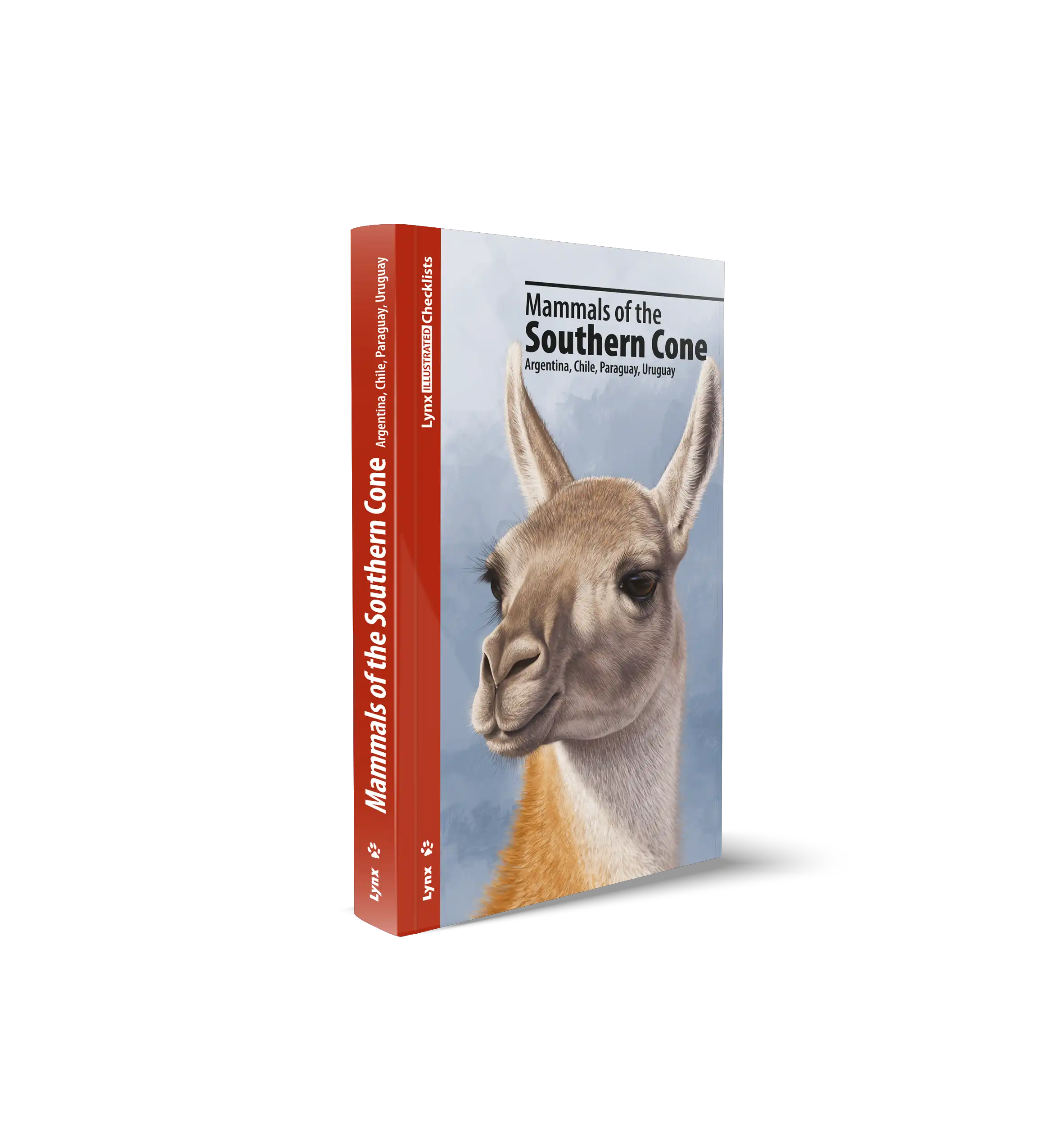
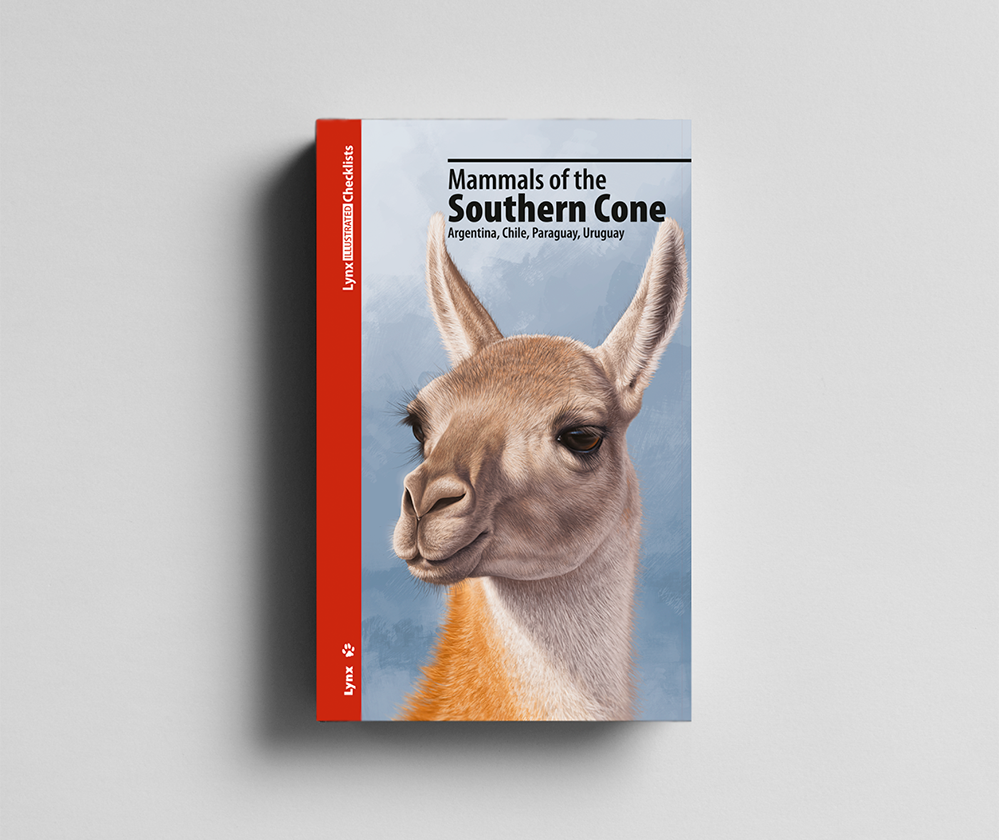
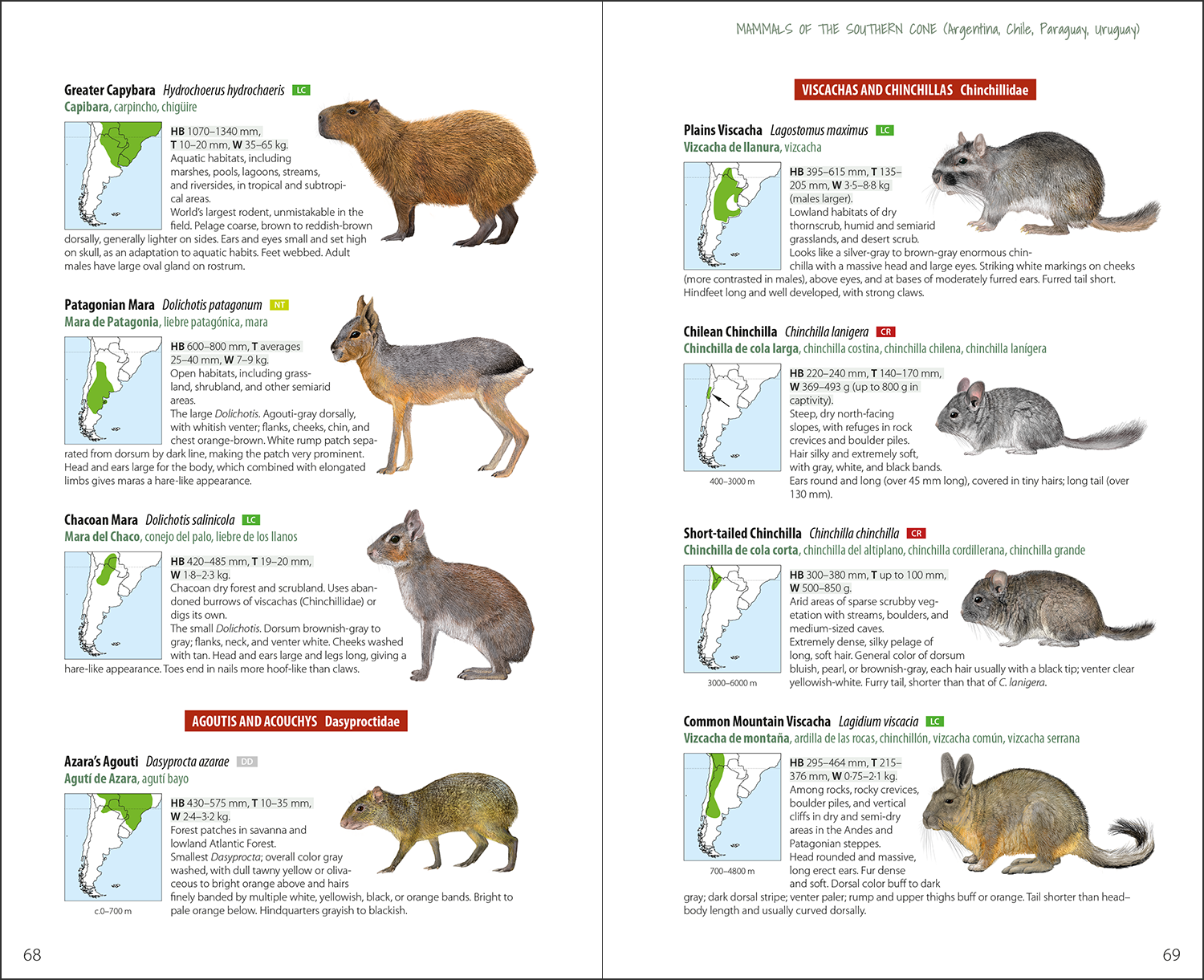
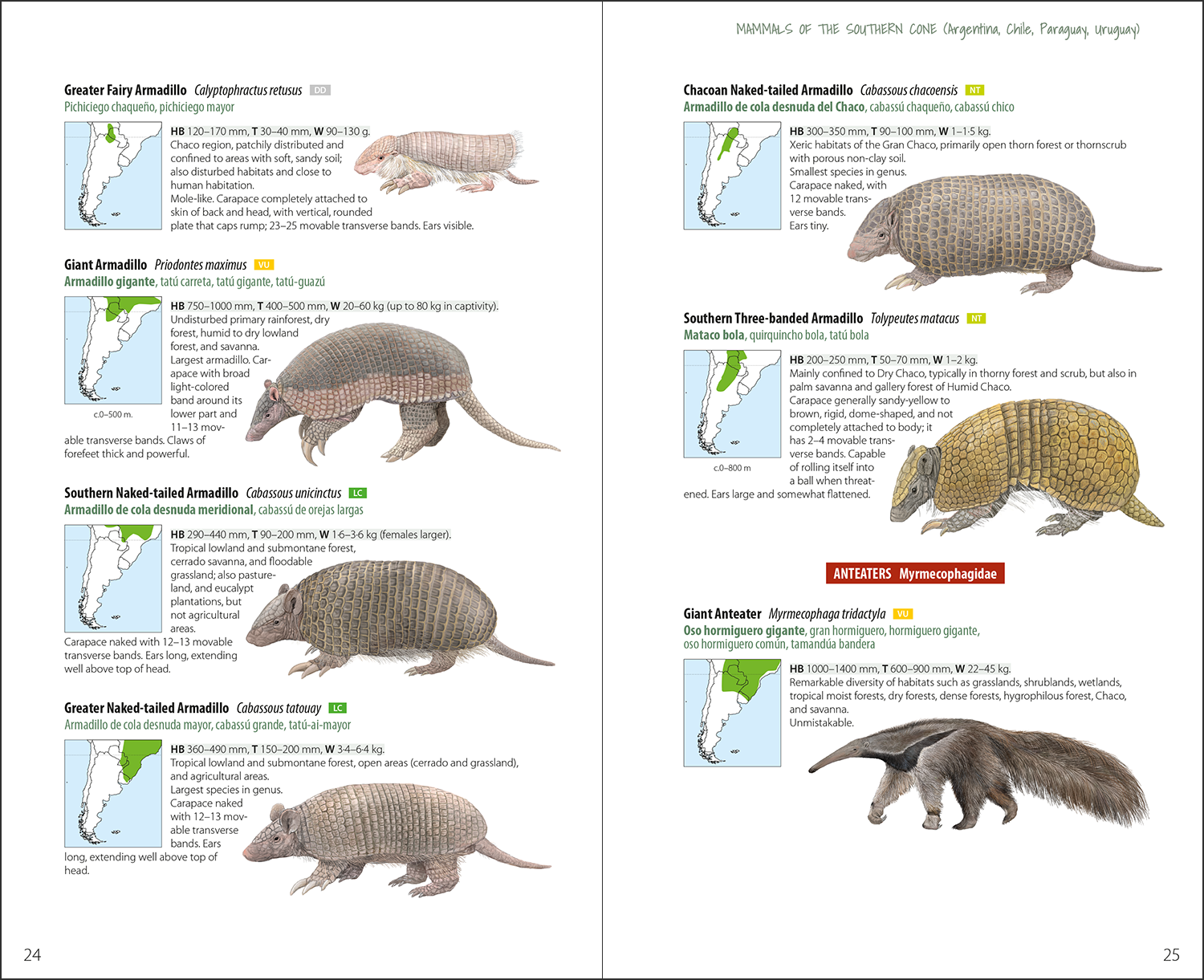
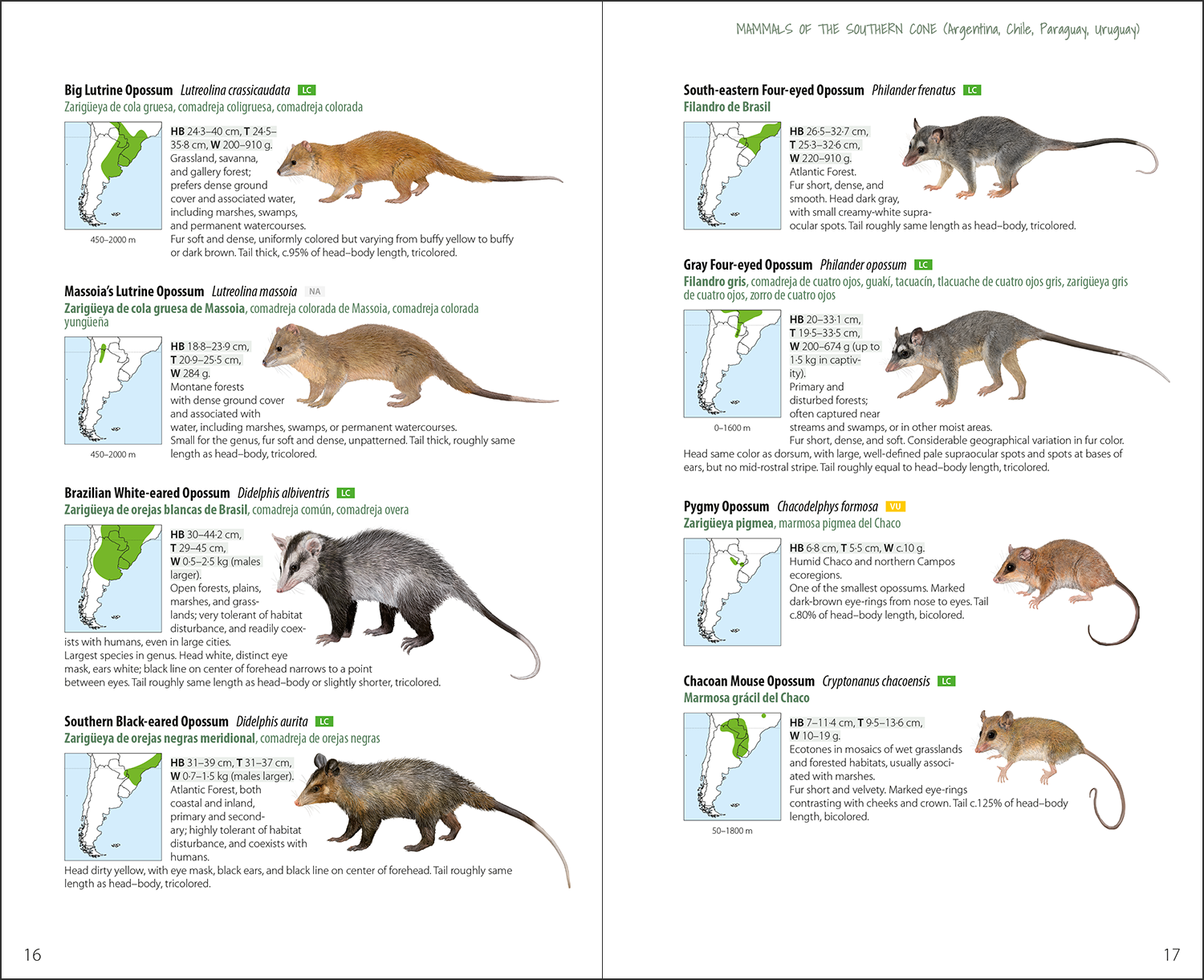

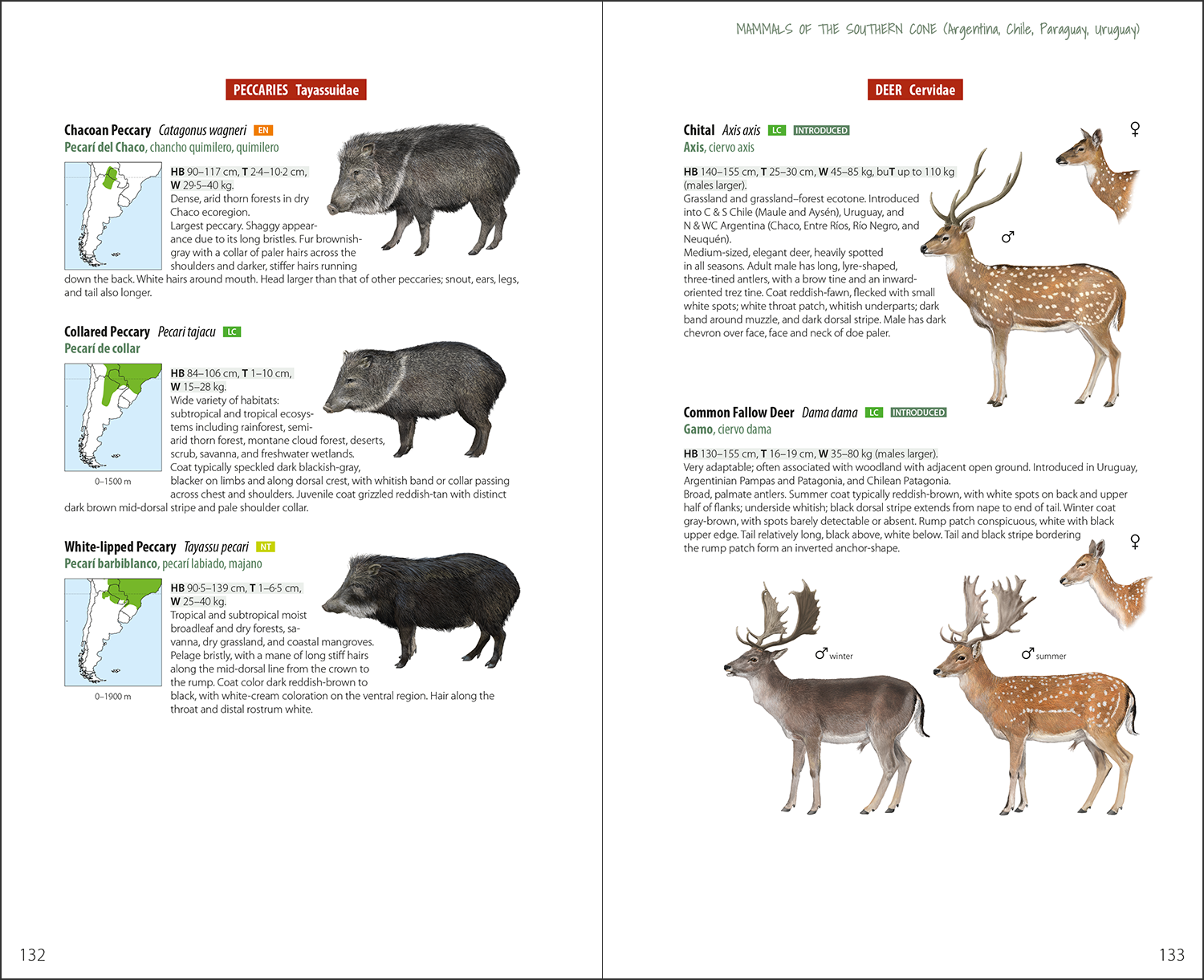
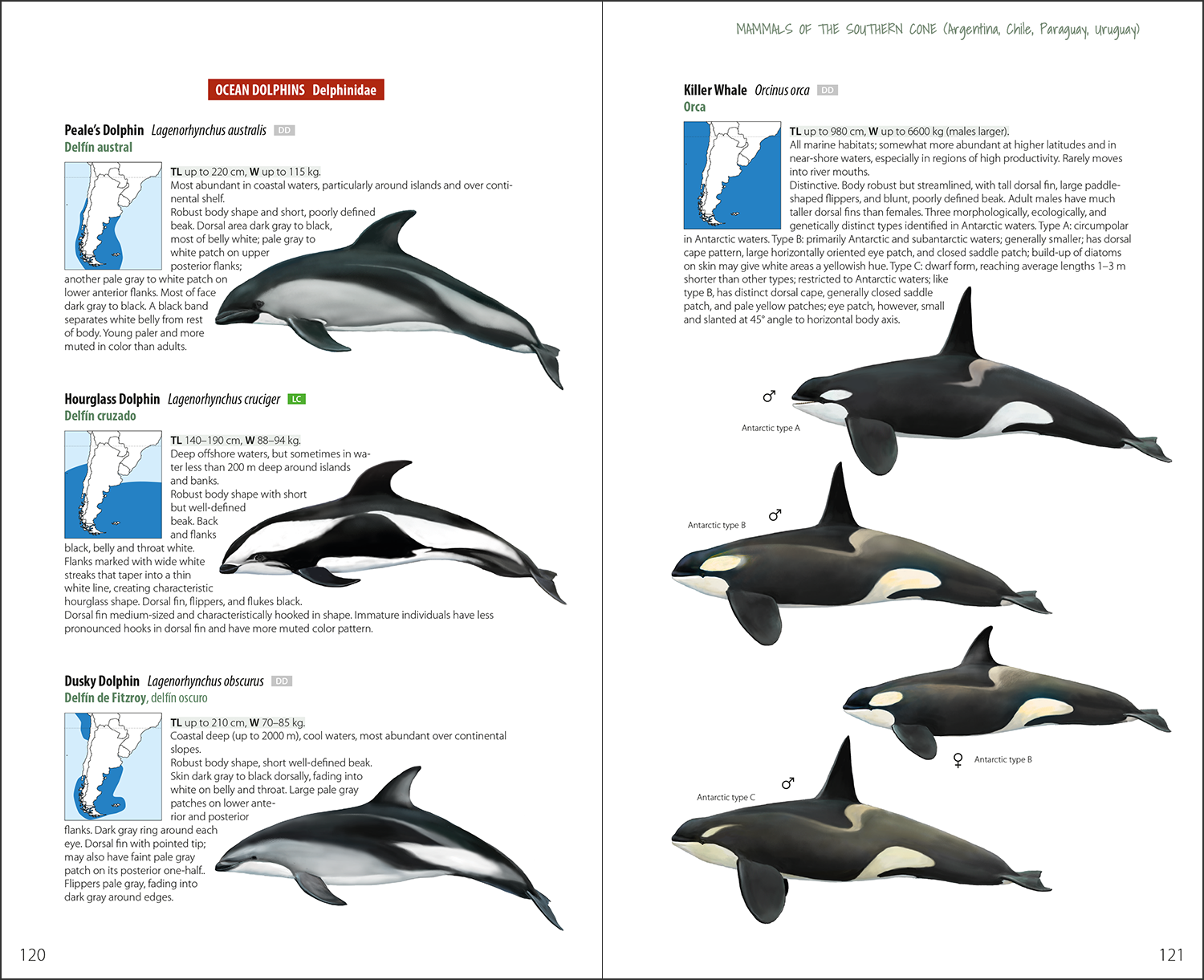
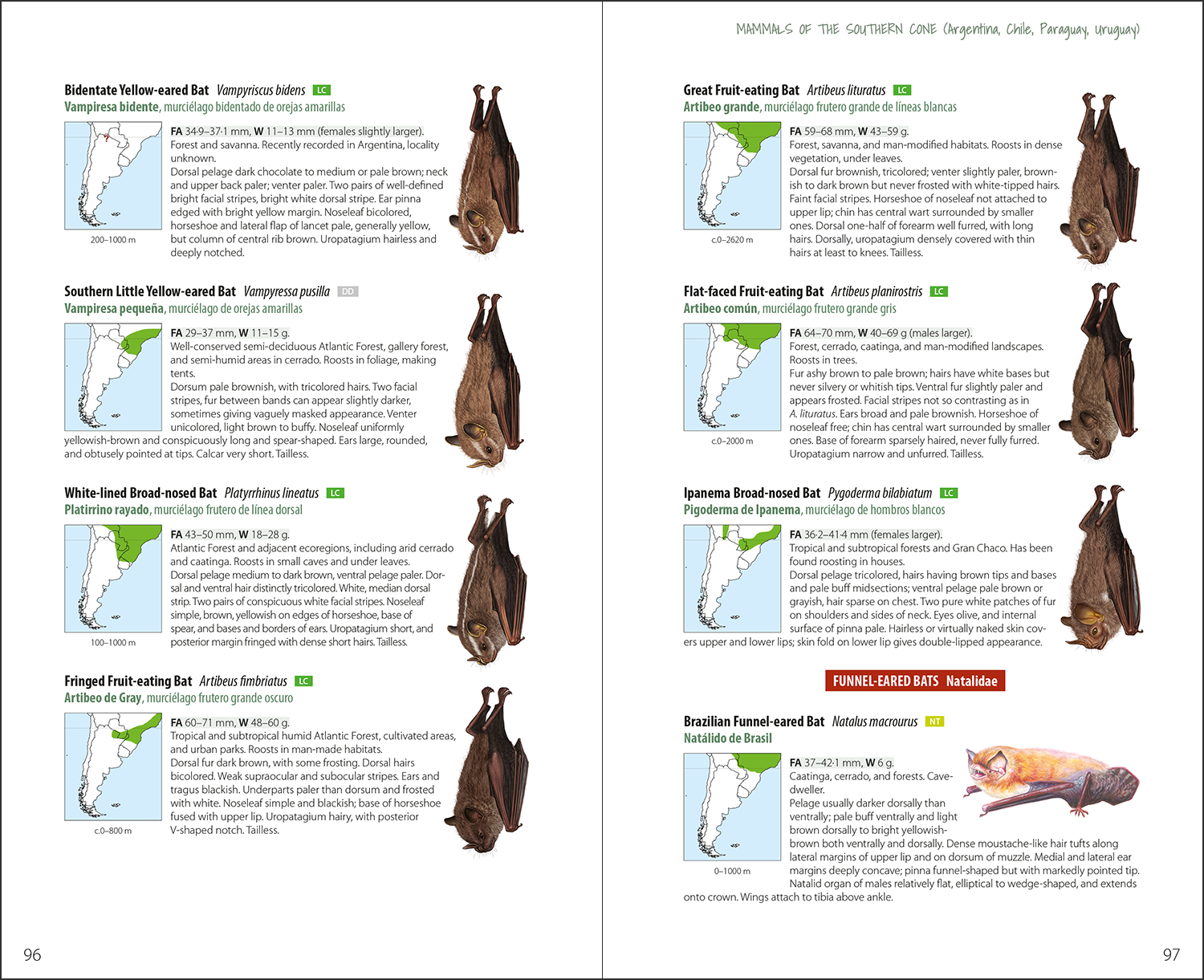
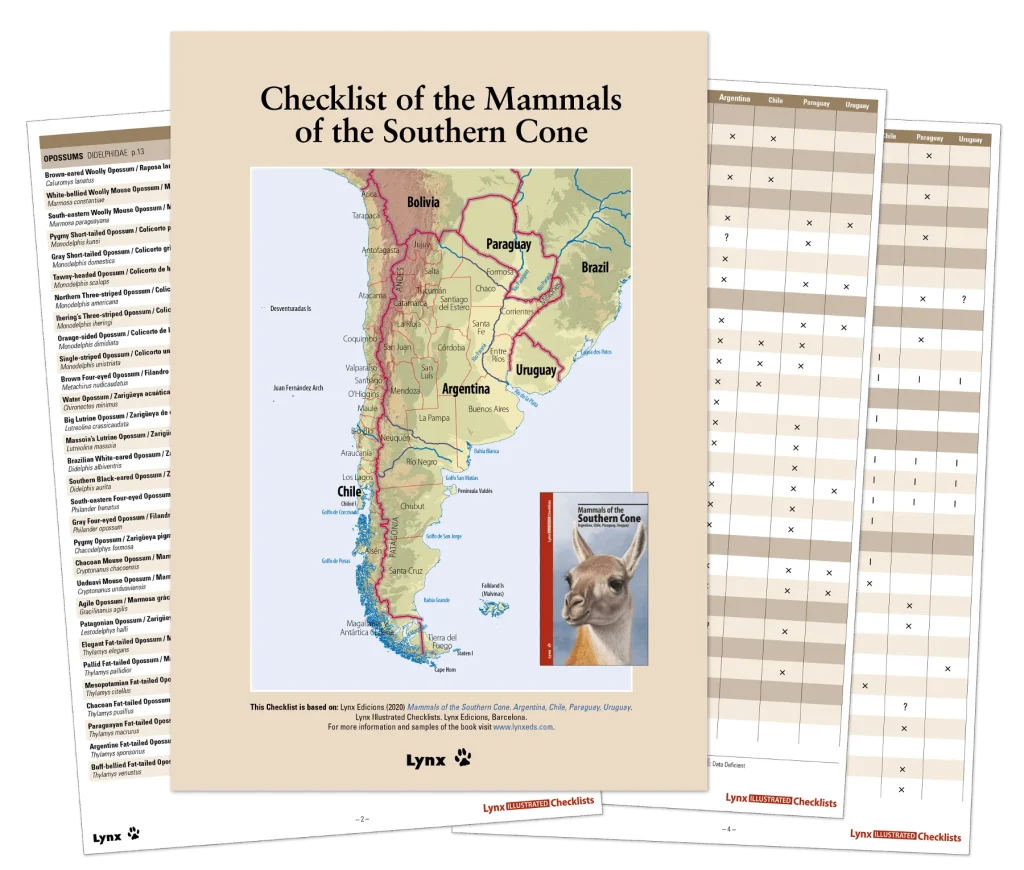
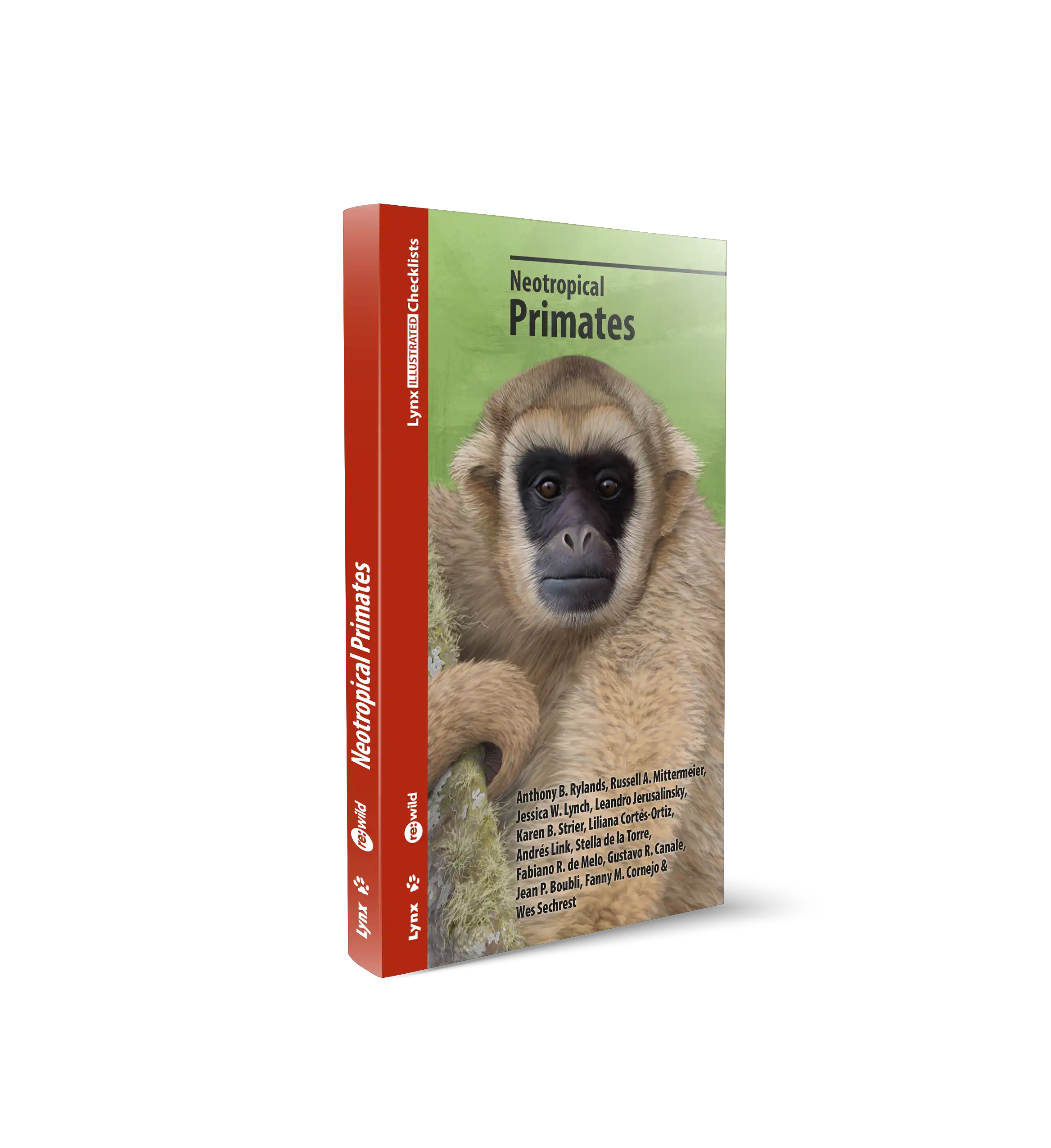
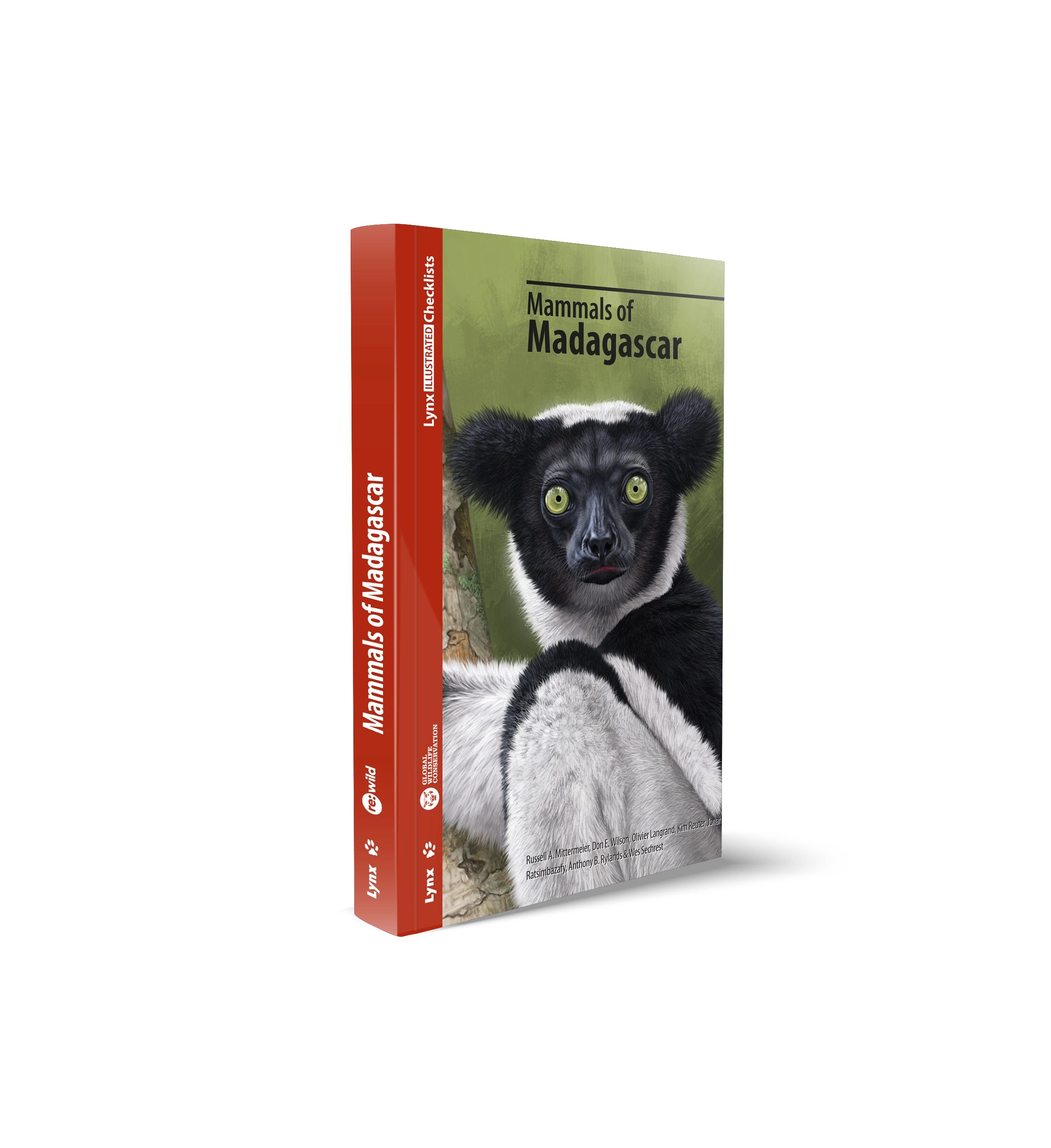
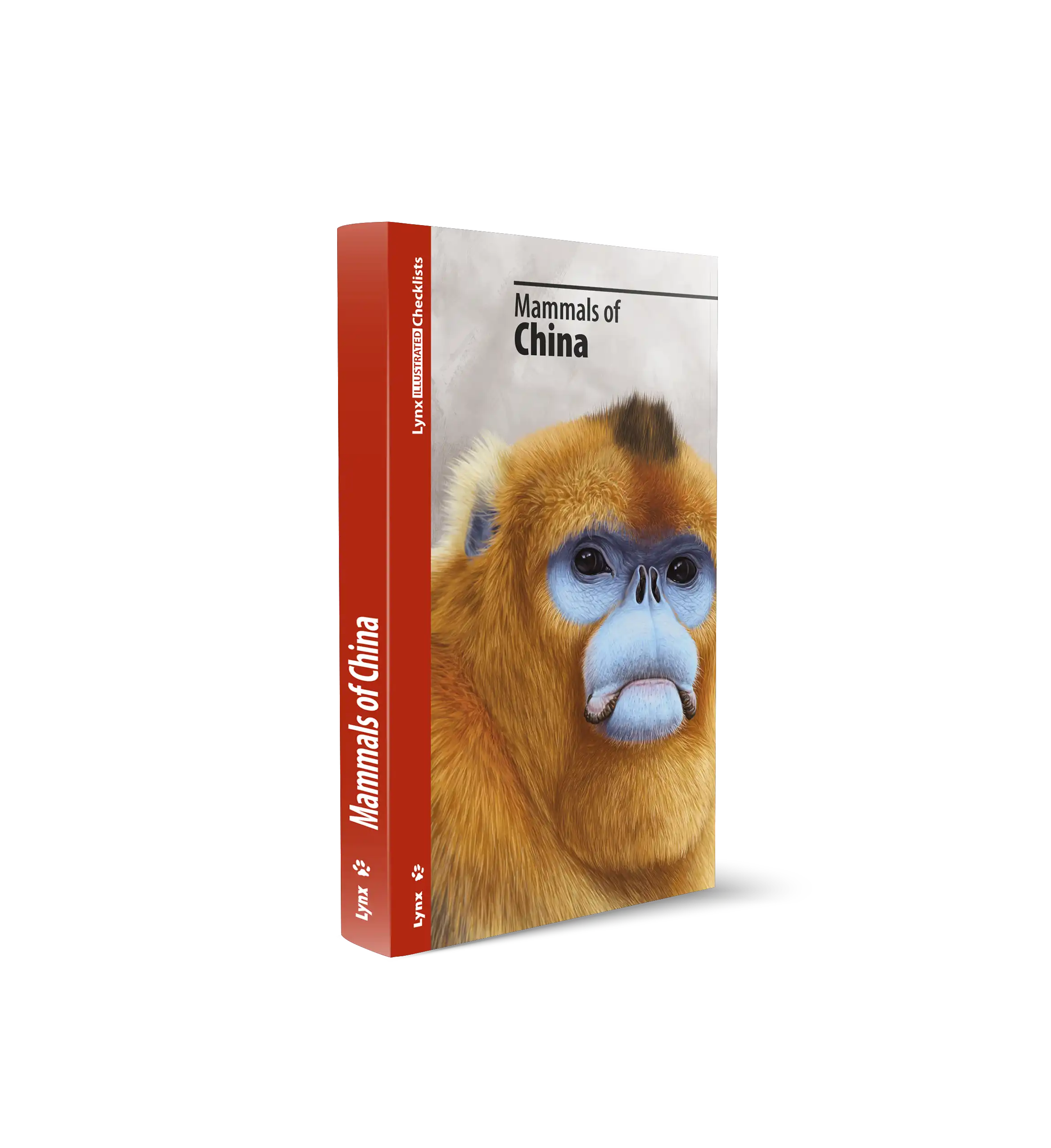
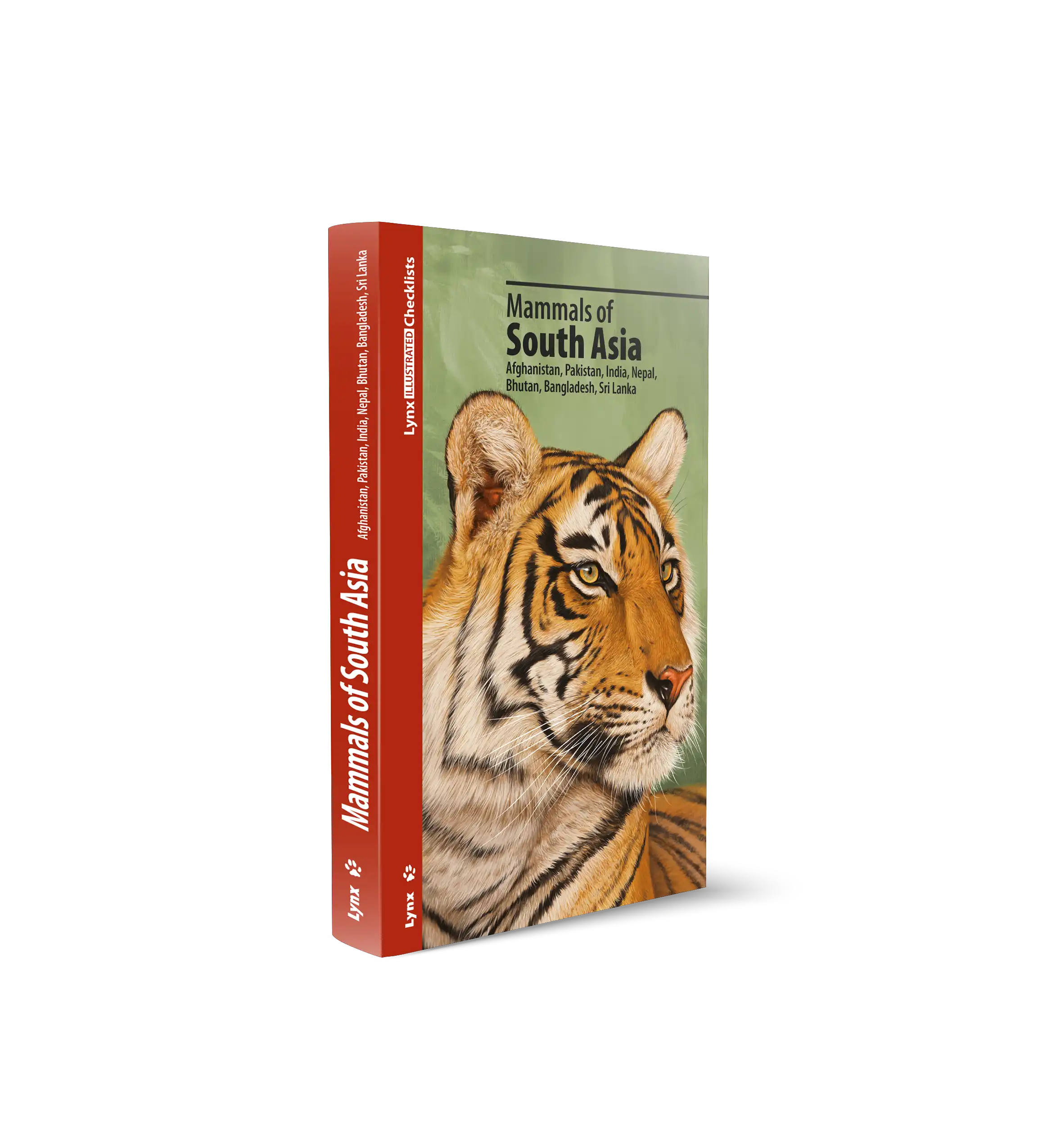
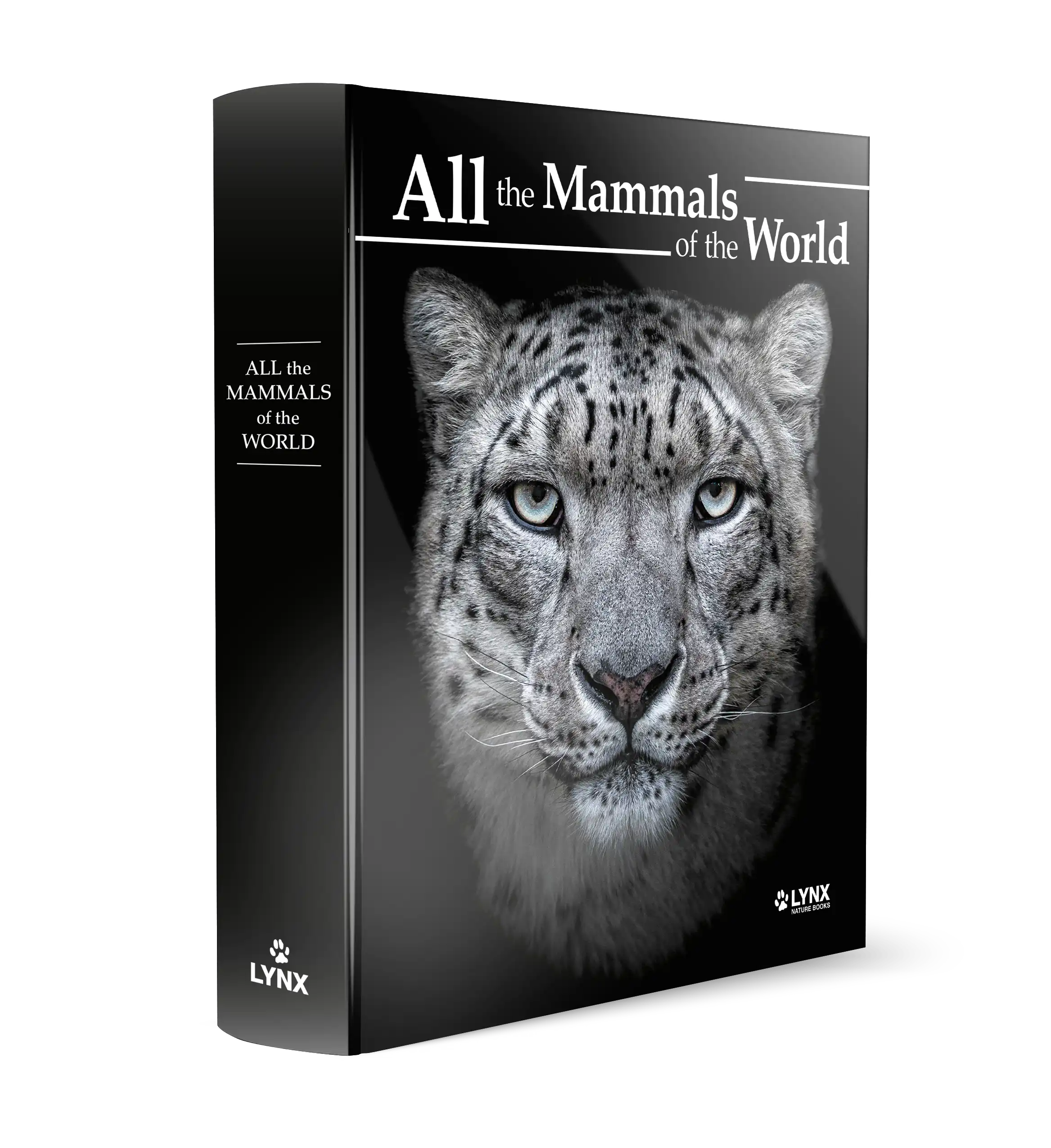
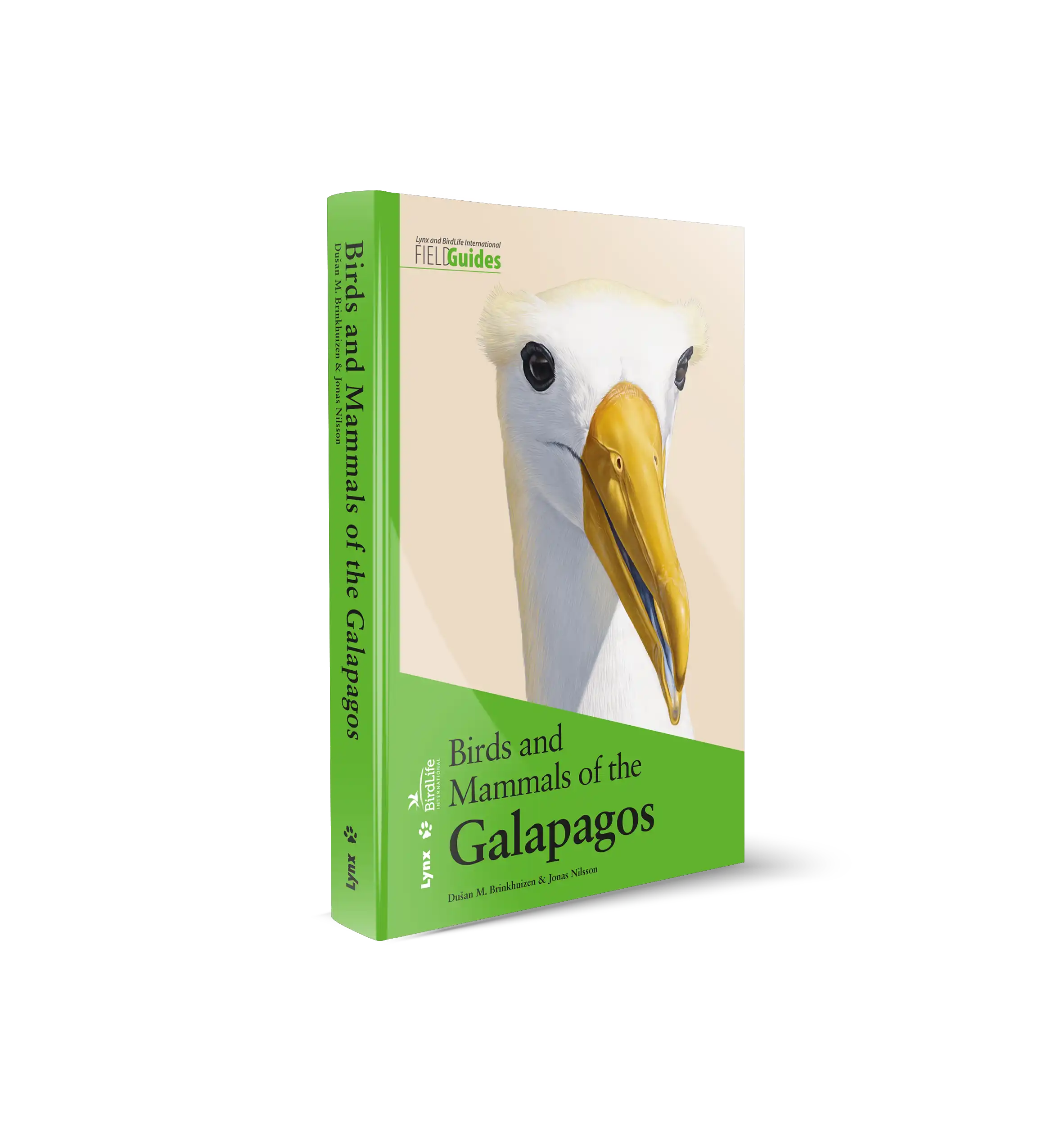
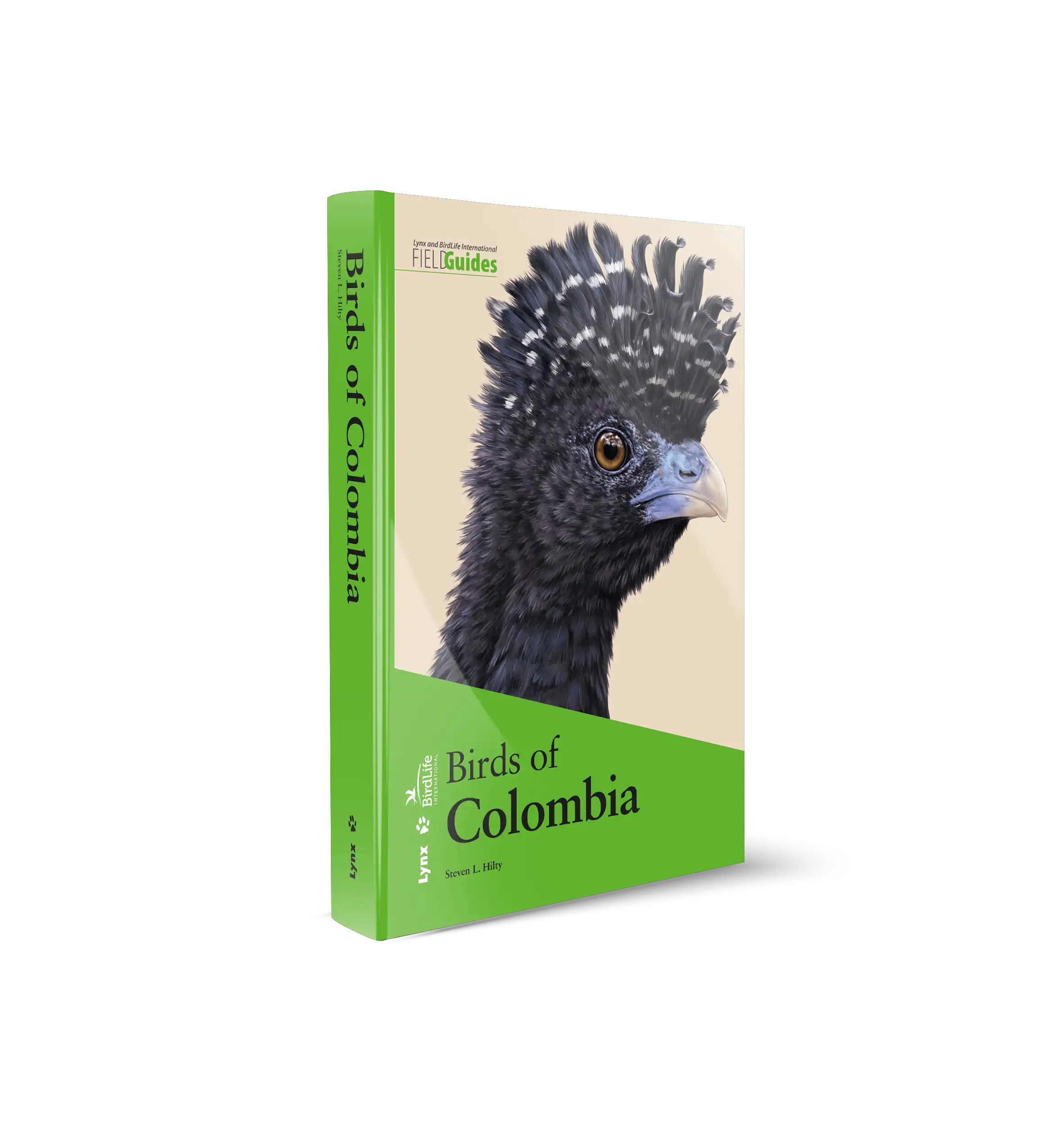
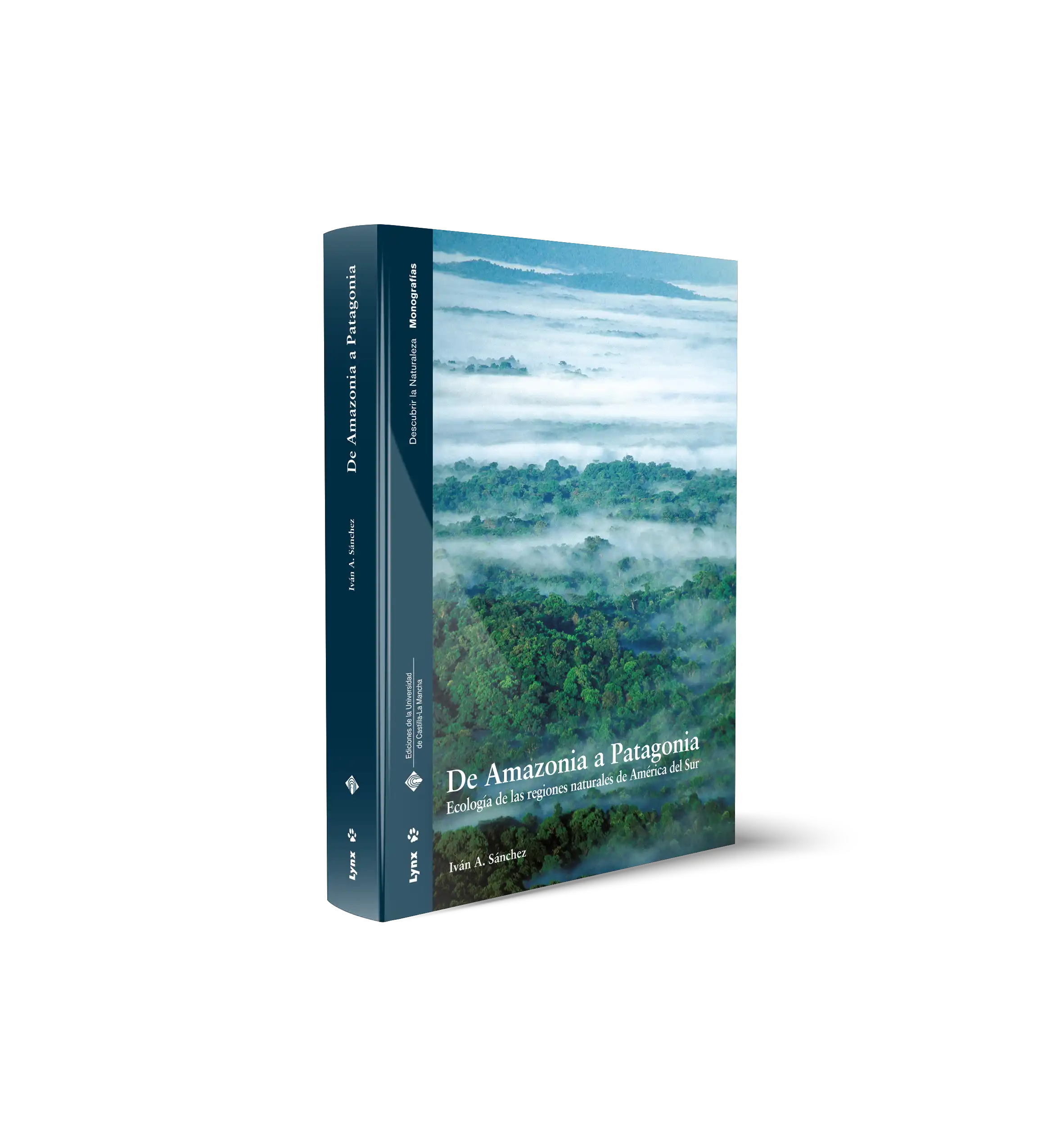
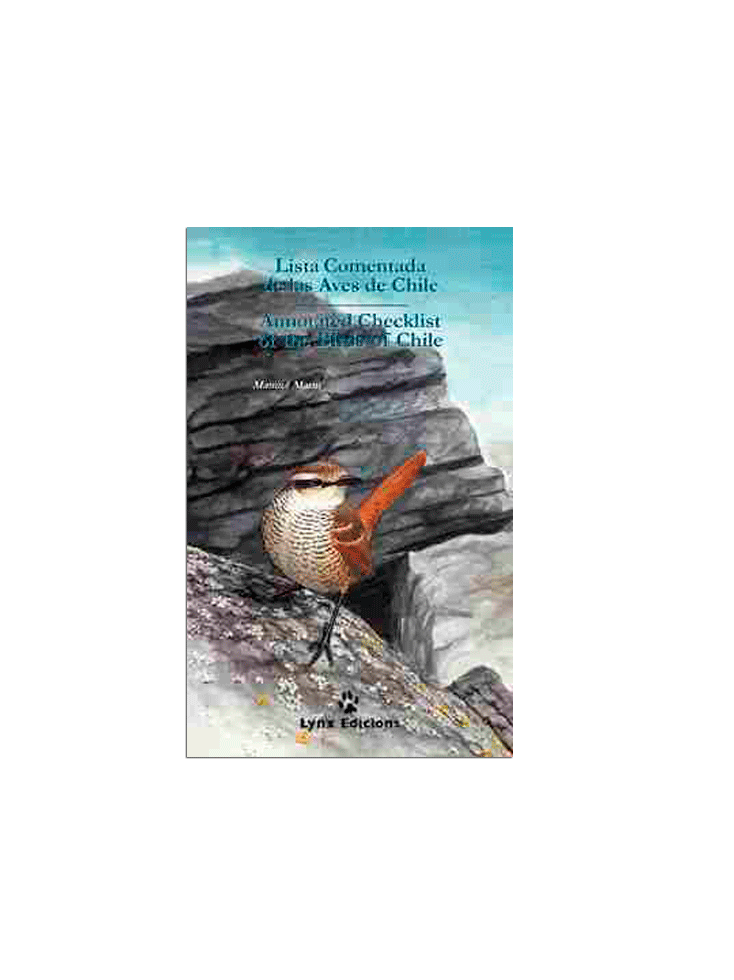
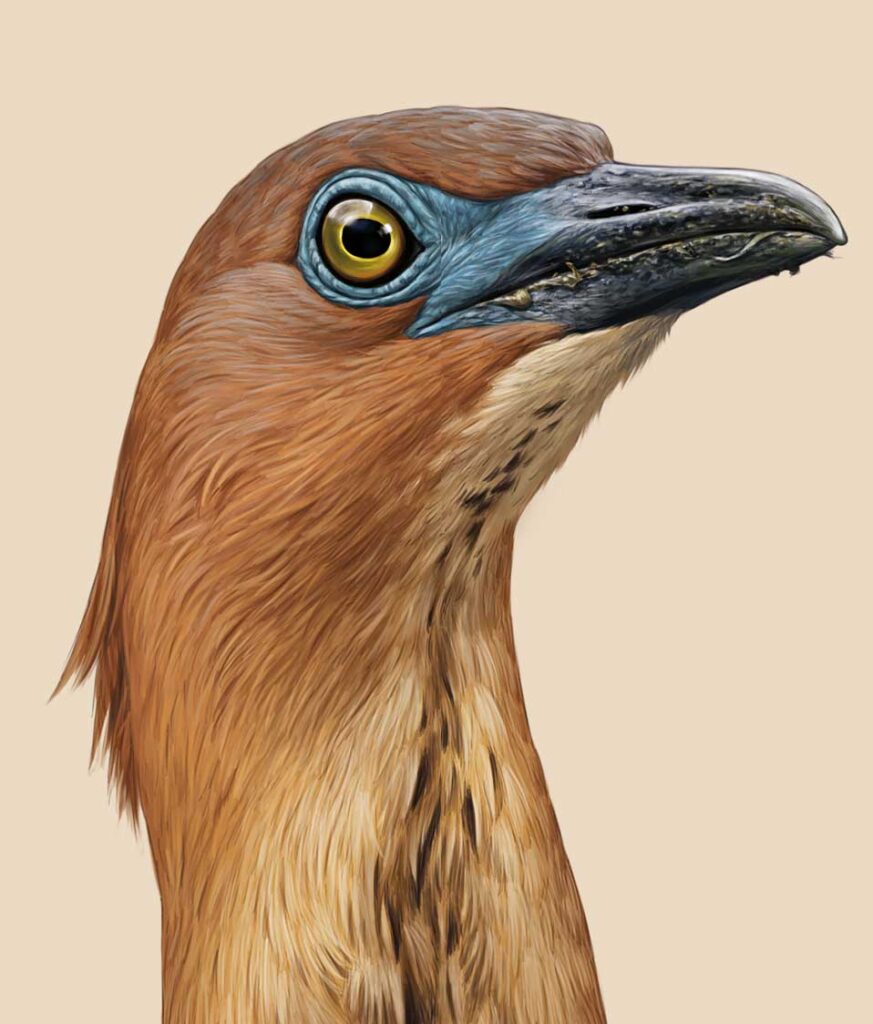
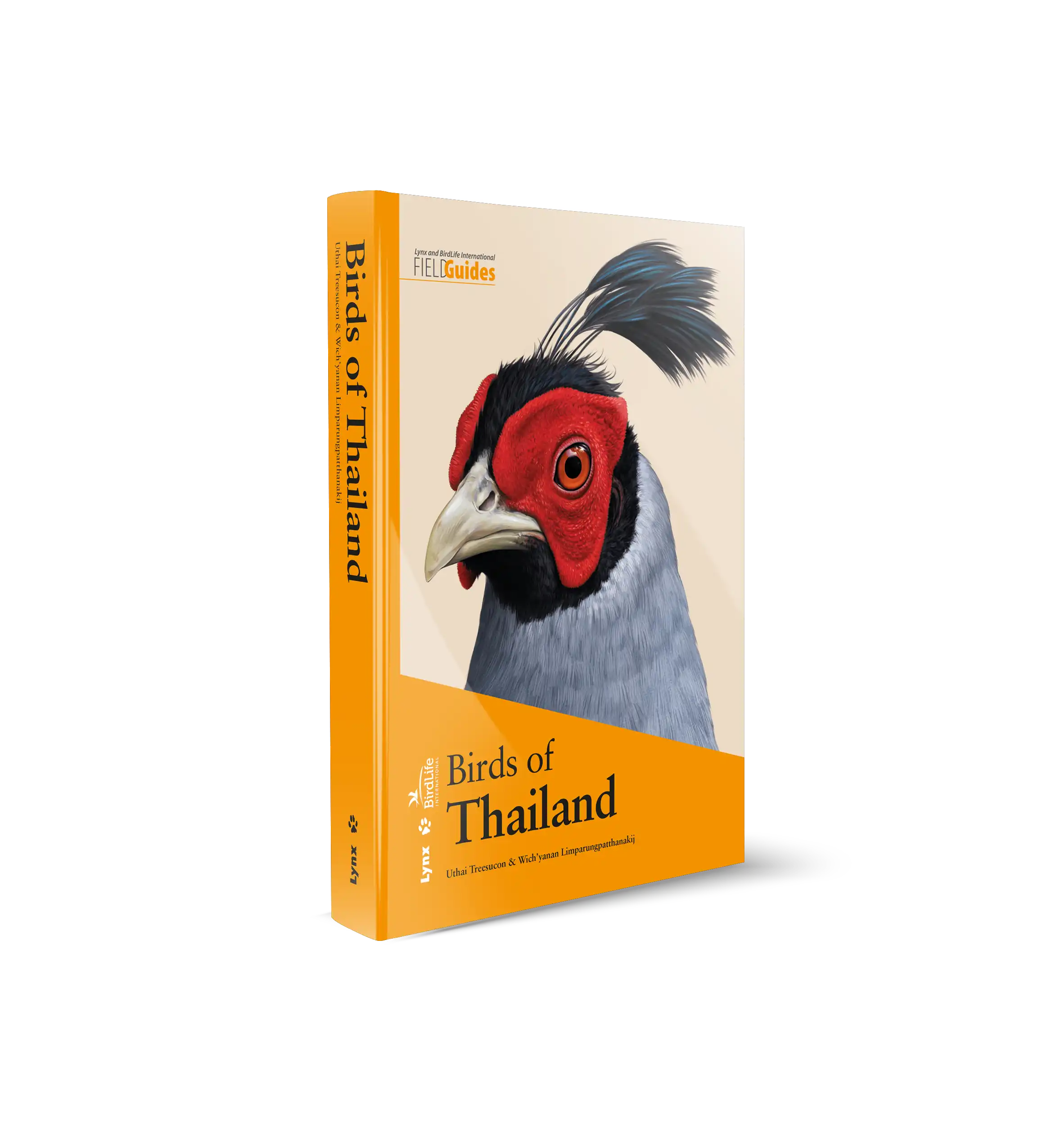
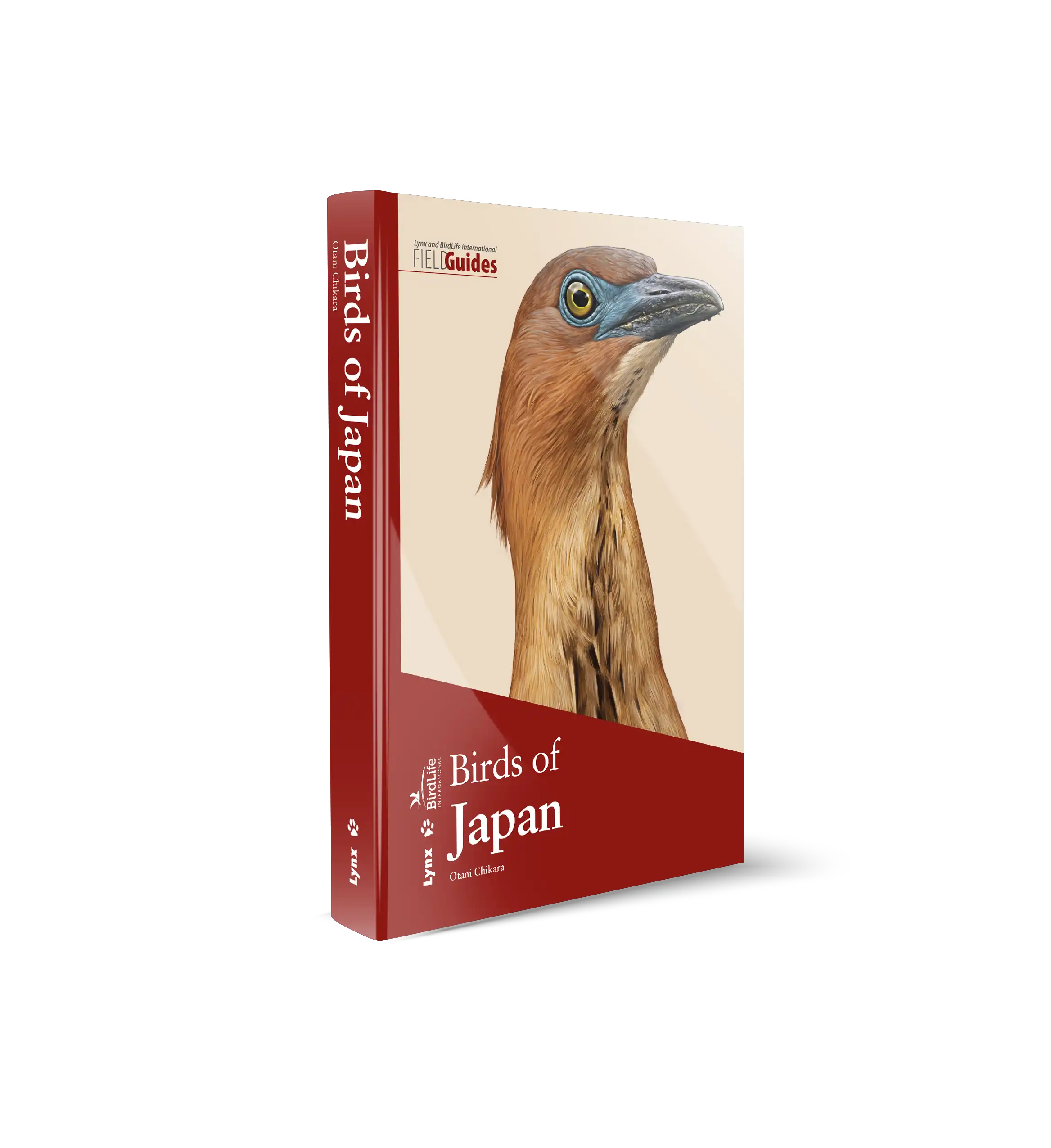








 Copyright 2026 © Lynx Nature Books
Copyright 2026 © Lynx Nature Books
Josep Sala Vilarasau –
A very good book. Very handly and useful. A must for every mammal lover and those to travel to that region.
Julien (verified owner) –
Livre interessant qui vaut le mérite d’être édité.
Je pense que 2 choses peuvent être améliorées ou modifiées :
1) c’est une checklist illustrée donc les dessins mériteraient à mon sens d’être plus grand ou en tout cas de prendre une place équivalente au texte voir plus.
2) La description physique des espèce me parait inutile (car le dessin amène déjà cette information). J’aimerais avoir d’autres informations à la place comme le régime alimentaire, dynamique de la population, site principal pour voir l’espèce…
Merci aux éditions Lynx tout de même. Je pense prendre les autres volumes 🙂
GRANGER Michel (verified owner) –
Très bonne initiative que cette approche de l’ensemble des mammifères d’une zone géographique ciblée, ouvrage synthétique très visuel et donc fort pratique (mais je ne le vois cependant pas comme un guide, comme c’est sous-entendu en 4e de couverture : « very handy for the field ».
Petit regret : j’aurais bien aimé trouver les noms français des espèces présentées.
Cordialement,
Michel Granger
Ad (verified owner) –
Great supplement for the Mammals of the World series
Gonzalo Fernández Hoyo (verified owner) –
Excellent spin-off from HMW, superb quality as in all Lynx books. A very welcome surprise are the NEW PRIMATE ILLUSTRATIONS (!) of far better quality than on the HMW Volume 3. Some suggestions for the forthcoming illustrated checklists of this series:
– Larger illustrations, there’s certainly room for that.
– Better grouping of the illustrations per page/family-genus. For instance, hares and rabbits (3 species) are laid out on two consecutive pages, not possible to see all of them at the same time.
– A better format, following the Lynx and Birdlife International FIELD Guides, with Flexicover option.
Bernd Rohrschneider (verified owner) –
This is an excellent book covering every known mammal species in that certain region.
For the forthcoming volumes I would wish additionally mentioned the German and French names (as in the Handbook of the mammals of the world) and at least a short description of the behavior in a few sentences or helpful keywords like nocturnal, arboreal,…
Gehan de Silva Wijeyeratne –
This slim volume marks the first in a new series of illustrated mammal checklists following the completion of the nine volume Handbook of Mammals of the World (HMW); an epic undertaking. This leaves Lynx Edicions in an enviable position amongst publishers by being in possession of illustrations of every extant mammal species in the world together with distribution maps and descriptive content available in a database. This means that they could very easily hive off the material into a series of country level or regional field guides. Does this mean that in the future they will be unbeatable competition for other publishers of mammal field guides? I suspect they will challenge the stablished order, but they will not be unbeatable as different authors and publishers will have their own approach to field guides, each offering something new and different. I recently submitted the text and photographs to John Beaufoy Publishing for ‘A Naturalist’s Guide to the Mammals of Sri Lanka’ which covers 95% of the species in Sri Lanka. I know from that experience that for many species, a single illustration is not enough and for species such as bats it is often necessary to have multiple images showing close ups of anatomical features. However, when you consider the illustrations of what is currently available for regions such as South America, there is no doubt that this publication with illustrations of a high standard and concise but focused text is a hugely welcome addition.
It is interesting they have cautiously labelled the volume as an ‘Illustrated Checklist’. I first visited South America as a student and back packed in Peru for six weeks. In the 1980s, even for birds a modern field guide was not available. The checklist has many of the features of what one would expect from a field guide. The concise text is identification focused with details of distribution, habitat, measurements and a distribution map. The typically single illustration of each species is next to the text which makes efficient use of the space although that is a departure from field guides which often have a facing plate of text. If it had been described as a field guide, it would have been hard to disagree as it ticks most of the boxes for what is expected from a field guide. Arguably, in terms of quality and content it surpasses some field guides I have seen. But billing it as an Illustrated Checklist is a safer description as a field guide should ideally have more illustrations and drawings to tease out identification features for some of the harder species.
There is no author citation in the publication as it is a derivative from the nine volume HMW. However, there is a preface by Don E. Wilson, Chief Editor of HMW and one of the most prolific writers on mammals of recent decades. There are two pages of introduction including a map which shows the countries covered, and were it not for the partial exclusion of Brazil, its coverage would have been effectively all of Southern South America. There is a half of page of text introducing the species account and then you are into the species accounts (pages 13 – 152) followed by just over a page of key references and finally the index.
The arrangement of families, species and genera has been updated from the HMW for a forthcoming publication; an Illustrated Checklist of the Mammals of the World. The updated arrangement has been used in this volume to the 56 families covered. Many of the land mammal families are confined to the New World. As with HMW, the taxonomic arrangement is based on molecular phylogenetics which attempt to discern the evolutionary relationships. There is more than one way to translate evolutionary arrangement into a linear arrangement in a book such as this. But whatever the exact approach taken, it sheds more light on the relationships between families. Thus, because Cetaceans (whales and dolphins) evolved from a land mammal, in this volume the Cetaceans are arranged between bats and camels; (note, hippopotamuses which are absent in South America are the closest living relatives). The eared seals and earless seals which are obligate marine mammals, follow the bears as they are all part of the Order Carnivora.
The region has some spectacular land mammals which are popular with wildlife tourists. A few of them include for example the Giant Anteater, Three-toed Sloth, various primates, Greater Capybara, Jaguar and the Giant Otter. Unfortunately, perhaps ninety percent or more of the land mammals will be small or nocturnal or both. It is generally true of most countries that the majority of mammals are small or nocturnal or both. I am only too familiar with this having lived most of my life on two Islands; Britain and Sri Lanka at temperate and tropical latitudes respectively. Some of the most interesting mammals in South America include the New World marsupials. But most of these species are unlikely to be seen by casual visitors. The family Cricetidae (voles, lemmings and New World rats and mice) contribute 131 species and the bats in several families contribute 74 species. Even very keen mammal watchers will not see many of the mammals as they will require small mammal trapping under research permits. Nevertheless, this is a wonderful book to thumb though and see at a glance the mammal fauna of this part of the world spanning opossums, armadillos, howler monkeys, New World porcupines, pacas, right whale, and Kodkod (a small cat found in Southern beech forests).
The clever use of space means that 486 species are covered in a very slim book which is lightweight. This makes it suitable to be packed in for a visit even if the prime focus of a visit is a birding tour. Its portability and affordability will hopefully ignite a further interest in the study of mammals by naturalists resident in the region who previously have not had a resource of this quality and authority. I suspect there will be a market for the publisher to use this format and page size for an illustrated checklist for the birds of South America as well.